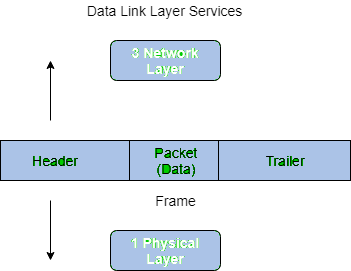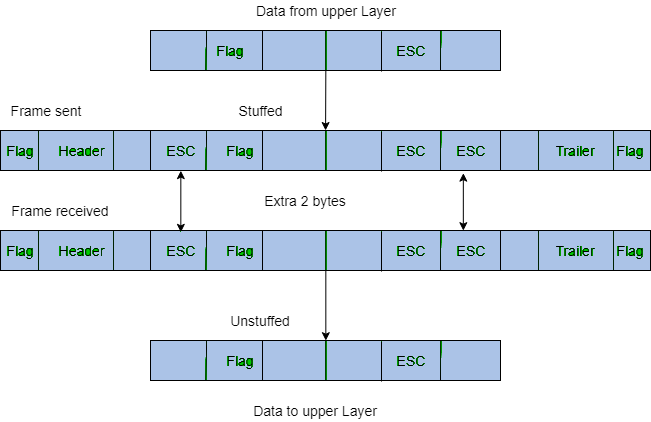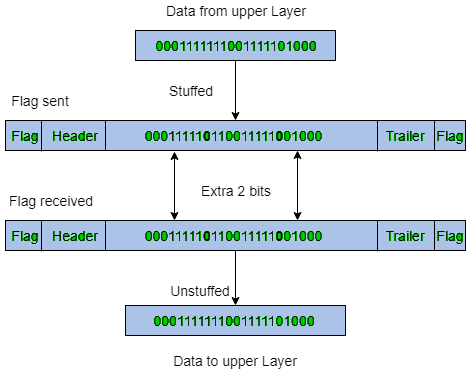Framing | Computer Networks - Computer Science Engineering (CSE) PDF Download
Introduction
- Frames are the units of digital transmission, particularly in computer networks and telecommunications. Frames are comparable to the packets of energy called photons in the case of light energy. Frame is continuously used in Time Division Multiplexing process.
- Framing is a point-to-point connection between two computers or devices consists of a wire in which data is transmitted as a stream of bits. However, these bits must be framed into discernible blocks of information. Framing is a function of the data link layer. It provides a way for a sender to transmit a set of bits that are meaningful to the receiver. Ethernet, token ring, frame relay, and other data link layer technologies have their own frame structures. Frames have headers that contain information such as error-checking codes.

- At the data link layer, it extracts the message from the sender and provides it to the receiver by providing the sender’s and receiver’s addresses. The advantage of using frames is that data is broken up into recoverable chunks that can easily be checked for corruption.
Problems in Framing
- Detecting start of the frame: When a frame is transmitted, every station must be able to detect it. Station detects frames by looking out for a special sequence of bits that marks the beginning of the frame i.e. SFD (Starting Frame Delimiter).
- How does the station detect a frame: Every station listens to link for SFD pattern through a sequential circuit. If SFD is detected, sequential circuit alerts station. Station checks destination address to accept or reject frame.
- Detecting end of frame: When to stop reading the frame.
Types of framing
There are two types of framing:
1. Fixed size: The frame is of fixed size and there is no need to provide boundaries to the frame, the length of the frame itself acts as a delimiter.
- Drawback: It suffers from internal fragmentation if the data size is less than the frame size
- Solution: Padding
2. Variable size: In this, there is a need to define the end of the frame as well as the beginning of the next frame to distinguish. This can be done in two ways:
(i) Length field: We can introduce a length field in the frame to indicate the length of the frame. Used in Ethernet(802.3). The problem with this is that sometimes the length field might get corrupted.
(ii) End Delimiter (ED): We can introduce an ED(pattern) to indicate the end of the frame. Used in Token Ring. The problem with this is that ED can occur in the data. This can be solved by:
- Character/Byte Stuffing: Used when frames consist of characters. If data contains ED then, a byte is stuffed into data to differentiate it from ED.
Let ED = “$” –> if data contains ‘$’ anywhere, it can be escaped using ‘\O’ character.
→ if data contains ‘\O$’ then, use ‘\O\O\O$'($ is escaped using \O and \O is escaped using \O). Disadvantage: It is very costly and obsolete method.
Disadvantage: It is very costly and obsolete method. - Bit Stuffing: Let ED = 01111 and if data = 01111
→ Sender stuffs a bit to break the pattern i.e. here appends a 0 in data = 011101.
→ Receiver receives the frame.
→ If data contains 011101, receiver removes the 0 and reads the data.
Examples
- If Data → 011100011110 and ED → 0111 then, find data after bit stuffing?
→ 011010001101100 - If Data → 110001001 and ED → 1000 then, find data after bit stuffing?
→ 11001010011
The document Framing | Computer Networks - Computer Science Engineering (CSE) is a part of the Computer Science Engineering (CSE) Course Computer Networks.
All you need of Computer Science Engineering (CSE) at this link: Computer Science Engineering (CSE)
|
21 videos|145 docs|66 tests
|
Related Searches
















